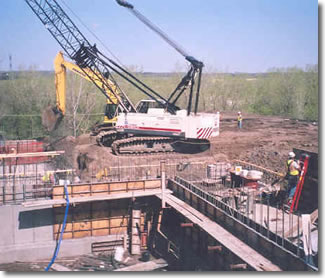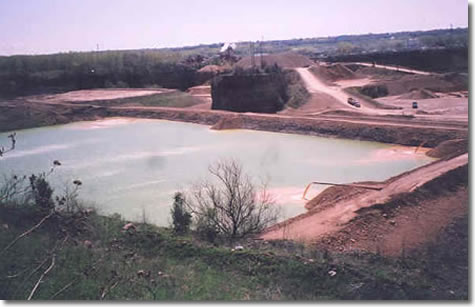Drinking Water Protection
- Drinking Water Protection Home
- About Us
- A-Z Index of Contaminants in Water
- Community Public Water Supply
- Drinking Water Grants and Loans
- Drinking Water Institute
- Drinking Water in Schools and Child Cares
- Drinking Water Revolving Fund
- Laws and Rules
- Noncommunity Public Water Supply
- Source Water Protection
- Water Operator and Certification Training
- Drinking Water Protection Contacts
Related Topics
- Annual Reports
- Drinking Water Risk Communication Toolkit
- Drinking Water Protection External Resources
- Fact Sheets
- Forms
- Invisible Heroes Videos: Minnesota's Drinking Water Providers
- Noncom Notes Newsletter
- Sample Collection Procedures (videos, pictures, written instructions)
- Waterline Newsletter
Related Sites
- 10 States Standards
- Clean Water Fund
- Health Risk Assessment – Guidance Values and Standards for Water
- Minnesota Well Index
- Water and Health
- Wells and Borings
Environmental Health Division
New Burnsville Plant Will Use Excess Quarry Water
Burnsville Partnership Will Provide Water, Help Preserve Fens
From the Fall 2008 Waterline
Quarterly Newsletter of the Minnesota Department of Health Public Water Supply Unit, Waterline
A complete list of feature stories can be found on the Waterline webpage.
 |
 |
| A new water treatment plant being built in Burnsville will get its water from a quarry a mile away. | |
The balance between too much and not enough water is often difficult to achieve. However, a quarry in Burnsville and the city’s water utility are teaming up to create a situation in which all parties benefit.
Kraemer Mining & Materials, Inc. operates a quarry to mine for dolomite limestone deposits in northwest Burnsville, just south of the Minnesota River. The mining operations require dewatering of the quarry, and Kraemer is now pumping approximately 10 million gallons a day (3.6 billion gallons per year) into the Minnesota River. A water appropriation permit obtained from the Minnesota Department of Natural Resources a decade ago allows for the discharge of four billion gallons a year, a figure the quarry is approaching. Kraemer would like to expand its operations, but it would require the pumping of greater volumes of water than are allowed under their permit.
Meanwhile, the city of Burnsville and surrounding communities are in need of more water. Instead of getting this water in the usual way, by drilling several new wells, Burnsville has entered into an agreement with the quarry to use some of the water it has been pumping into the river. In addition to helping solve the quarry’s problem with the excess water, the city is reducing the impacts on aquifers and nearby calcareous fens.
Additional wells would have an effect on the Black Dog and Savage fens. To protect these fens, the Minnesota Department of Natural Resources has encouraged local municipalities to minimize their use of the Prairie du Chien-Jordan aquifer, which feeds the fens. In addition to restrictions on the Prairie du Chien-Jordan aquifer, a moratorium exists on the use of water from the Mount Simon-Hinckley aquifer.
Instead, the city will be able to get its water from the quarry. Dave Edmunds, Kraemer’s chief operating officer, said the company has considered collaborating with the city for some time and renewed the initiative to work with Burnsville on such a project about four years ago. “It’s a pretty green project with good economic and environmental impacts,” said Edmunds.
The state of Minnesota also recognized how the project will benefit the environment and has included a total of $5.5 million for a new surface-water treatment plant and pipeline in bonding bills. An additional $3 million will come from Kraemer with the remainder of the total project cost of $13 million coming from Burnsville and the neighboring community of Savage, which will purchase some of the treated water from Burnsville.
“The surface water treatment plant project is a great collaboration between a private company, Kraemer Mining and Materials, the state of Minnesota, and two cities, Burnsville and Savage,” said Burnsville public works director Bud Osmundson. “Burnsville could have drilled another well, which would have been cheaper, but the quarry and future lake water provides us with another water source. Plus the addition of the surface water treatment plant provides the city with flexibility in major maintenance at our existing treatment plant. It just has a number of positive benefits to the ecology, the quarry operation, the state’s natural resources, and the cities’ future water supply.”
 |
| Water flows from the south sump (above) at the quarry to the north sump (below). |
 |
Currently, water from the south sump at the quarry flows by gravity and through weirs into the north sump. From there, it is pumped into the Minnesota River. When the project is complete, two angled wells drilled into the quarry will draw out the water, which will be pumped through a 20-inch main to the Burnsville treatment facility, located a mile to the east. The water supply will come from the dewatering operation at the south sump. Although it will be near groundwater quality, it will be considered surface water for treatment and regulatory purposes.
 The city currently has an 18 million-gallon-per-day water treatment plant with gravity filters to reduce iron and manganese and is building the new surface-water treatment plant adjacent to the existing water treatment plant. The new plant, which will be subject to regulations under the Surface Water Treatment Rule, will use a direct filtration process that includes aeration, rapid mixing with a coagulant, and flocculation. It will have four gravity filters and be capable of treating four to six million gallons per day of water from the quarry. After the water passes through the filters, it will go into a chlorine contact basin and then will flow by gravity into an existing seven-million gallon clearwell, where it will join treated water from the existing plant. The new plant will also include backwash reclaim tanks.
The city currently has an 18 million-gallon-per-day water treatment plant with gravity filters to reduce iron and manganese and is building the new surface-water treatment plant adjacent to the existing water treatment plant. The new plant, which will be subject to regulations under the Surface Water Treatment Rule, will use a direct filtration process that includes aeration, rapid mixing with a coagulant, and flocculation. It will have four gravity filters and be capable of treating four to six million gallons per day of water from the quarry. After the water passes through the filters, it will go into a chlorine contact basin and then will flow by gravity into an existing seven-million gallon clearwell, where it will join treated water from the existing plant. The new plant will also include backwash reclaim tanks.
Edmunds said they anticipate mining in this quarry for 15 or more years. When the mining ceases and dewatering operations are shut down, the local groundwater flow direction in the Prairie du Chien-Jordan Aquifer is expected to return to the natural condition of south to north, discharging to the Minnesota River. The natural groundwater flow will also fill the quarry and form a lake.
 The lake water is expected to have low turbidity and could be used by the city for its water supply. “The treatment scheme of the new plant is designed to be compatible with the dewatering that will be used initially and the possible future lake supply,” according to the project engineer, Greg Johnson of Short Elliott Hendrickson (SEH), Inc.
The lake water is expected to have low turbidity and could be used by the city for its water supply. “The treatment scheme of the new plant is designed to be compatible with the dewatering that will be used initially and the possible future lake supply,” according to the project engineer, Greg Johnson of Short Elliott Hendrickson (SEH), Inc.
“This is an investment that made sense to us,” said Edmunds. “It lets us be miners and be orderly as we mine the rest of this deposit.”
Of Interest
Burnsville Becomes First Metro System with On-Site Hypochlorite Generation